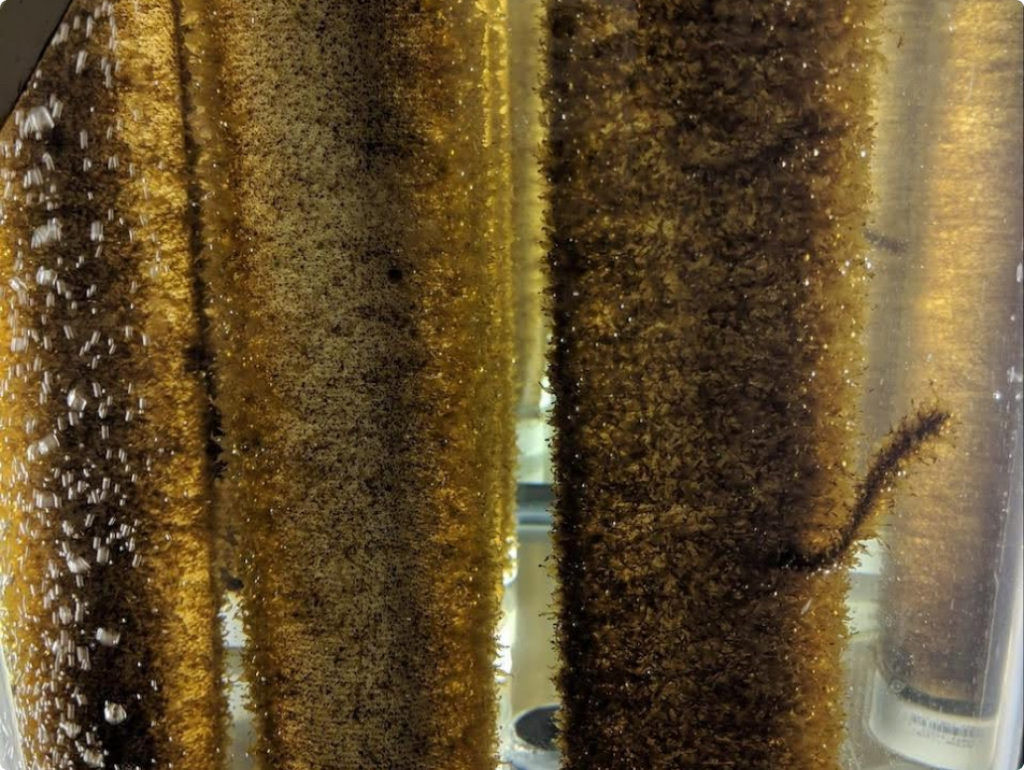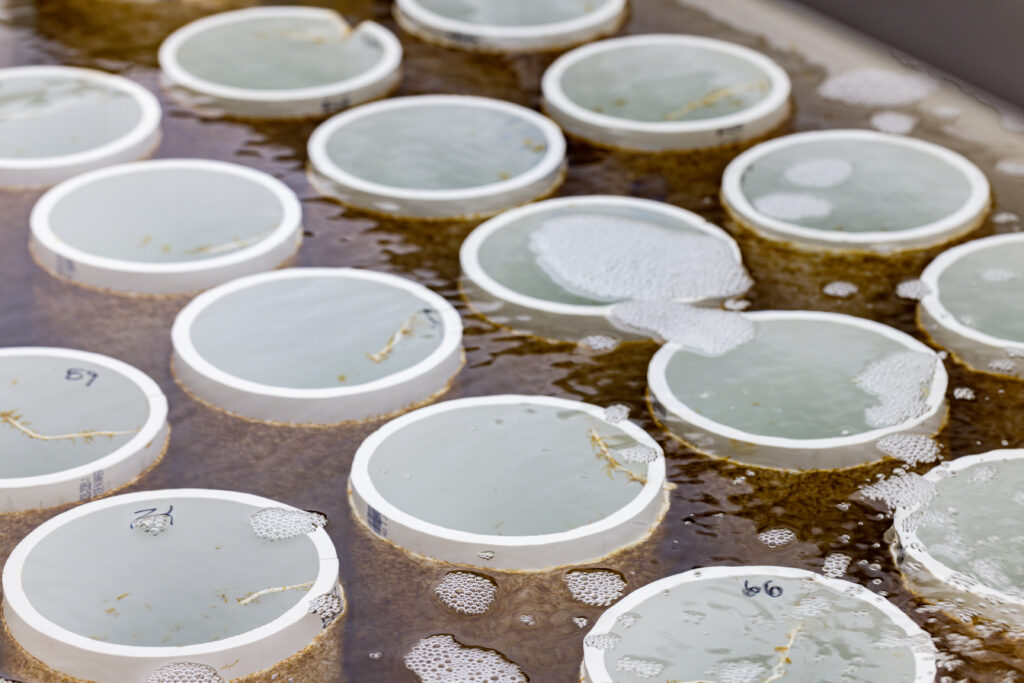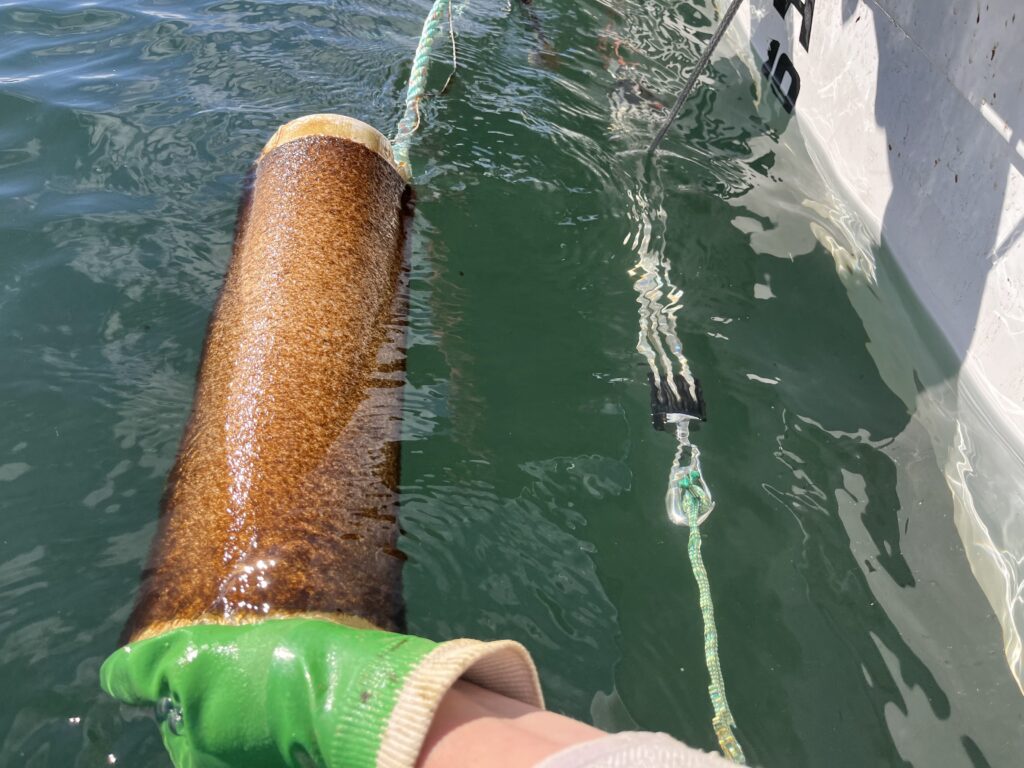Back to: Wrapping Up the Season
As the last spools are getting ready to leave the security of your tanks and make their way to the big wide world, where they’ll grow into beautiful, long kelp blades, you—as the hatchery operator—should take some time to reflect on the successes and failures of the season. You’ll always be working toward the goal of a 100% success rate in your hatchery—meaning all spools resulted in healthy, outplantable growth—but the reality is that some unforeseen circumstances (and a few mistakes) will happen along the way. It’s important to take note of what went well and what can be improved for the next season.
One of the first steps can be looking through the records you kept for the season and identifying what worked well. Maybe you chose two different spore stocking densities on seeding day, and the higher stocking density took a week longer to reach outplant size (due to competition) than the lower density. You can use this knowledge going forward and be more conservative with your spore solution during seeding.
Or, perhaps you experienced similar contamination in two different tanks and experimented with different strategies. Was one strategy more effective at getting rid of the contamination than the other? Did both methods work, but one was much more time-consuming and difficult? It’s good to reflect and adjust your approach for the future.

Finally, the ultimate signs of a successful hatchery season are reports back from happy farmers. It’s good to follow up with farmers to see how their seed performed and brainstorm hatchery methods for an optimized final crop yield.


All in all, the U.S. kelp industry is still very young, and there is lots of room for innovation. Share the problems you encountered, the solutions you came up with, and new innovations you developed in the Hub Community! We look forward to learning from you as you continue on your journey, growing healthy and beautiful seed for farms across the country. Together, onwards!